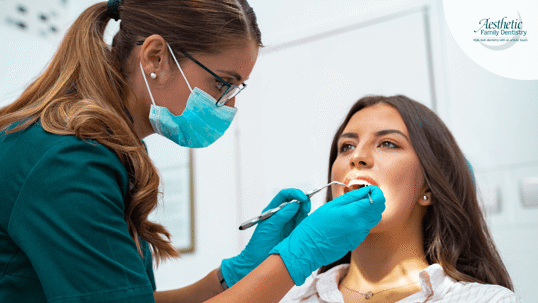Why Do You Need a Tooth Extraction?
Losing a tooth as an adult is not as exciting as it is when you’re a child. Unfortunately, the tooth fairy does not pay a visit, and it usually tends to be more painful. When you lose an adult tooth, there is no expectation for another tooth to grow in behind it.
Unless an adult tooth was knocked out due to injury or trauma, most reasons an adult would lose their teeth require tooth extractions.
Reasons for Extractions
So what are some reasons you may need to have your tooth removed?
One of the most regular tooth extraction procedures for impacted teeth is removing an individual’s wisdom teeth. They typically come in during your late teenage years or early adulthood. Symptoms of wisdom teeth impaction vary by person.
Typically, tooth extractions are performed if there is excessive tooth decay, a tooth infection, tooth impaction, or crowding. Other less common causes of tooth extractions include chemotherapy or an organ transplant.
Preparing for the Procedure
Before scheduling your procedure, your dentist will take an x-ray of the affected area. Have an open and honest conversation with your dentist about any medications, vitamins, other upcoming procedures, and any health conditions.
There is a possibility you will be prescribed antibiotics leading up to your procedure if you have an infection or weakened immune system.
Types of Anesthesia
To ensure you are ready for your procedure, discuss what form of anesthesia you may be receiving with your dentist. If you are receiving intravenous (IV) anesthesia, you may want to wear loose-fitted clothing or a short-sleeved shirt. With this type of anesthesia, it is best not to eat or drink anything for 6 to 8 hours leading up to your procedure.
For those that are receiving general anesthesia, it is best to prepare by securing someone to drive you home.
If you come down with a cold or experience any nausea or vomiting, speak to your dentist immediately as you may have to reschedule.
Oral surgery can be nerve-wracking, which is why preparing for your tooth extraction is beneficial in calming any nerves you may have and making you feel as ready as possible.
Types of Extractions
There are two main types of extractions depending on if your tooth is impacted or visible.
1. Simple Extraction
Simple extractions remove teeth that can be seen and are easily accessible. If you are in need of a simple extraction, you will receive a local anesthetic to numb the area around the affected tooth. With a local anesthetic, you may feel some pressure but no pain during the procedure.
When a tooth is extracted, it is pulled from its socket. Normally, your teeth are held in their socket by a ligament. Once the area is numb, the dentist will enlarge the socket to separate the tooth from the ligament. The dentist then uses an instrument known as an “elevator” to make the loose tooth even looser. He will then use forceps to remove the tooth.
2. Surgical Extraction
Surgical extractions typically require an incision to gain access to the tooth that needs to be removed. This is because they have not erupted through the gum completely.
During this procedure, you may receive local anesthesia and intravenous (IV) anesthesia to keep you calm and relaxed. The dentist may also choose to give you general anesthesia, in which you will not be conscious for the procedure.
In some circumstances, the tooth may need to be broken into several pieces in order to be removed. The dentist may also need to remove some of the nearby jawbone during the procedure as well.
How to Recover From Your Tooth Extraction
Following your tooth extraction, it may take a few days to recover. Be sure to apply an ice pack to your cheek on the side the tooth was removed to reduce any swelling. Spend the first 24 hours resting and relaxing, so you do not overexert your body.
We also recommend not to use a straw for the first 24 hours to avoid dry sockets. You should also avoid smoking, rinsing your mouth, or eating hard, crunchy foods.
If You Have an Emergency
At Aesthetic Family Dentistry, we strive to preserve your natural teeth. However, there are some circumstances where a tooth extraction may become necessary. If you are experiencing a severe infection, injury, or other damage, our team of professionals is here for you. Please don’t hesitate to contact us at (845) 209-2500.
